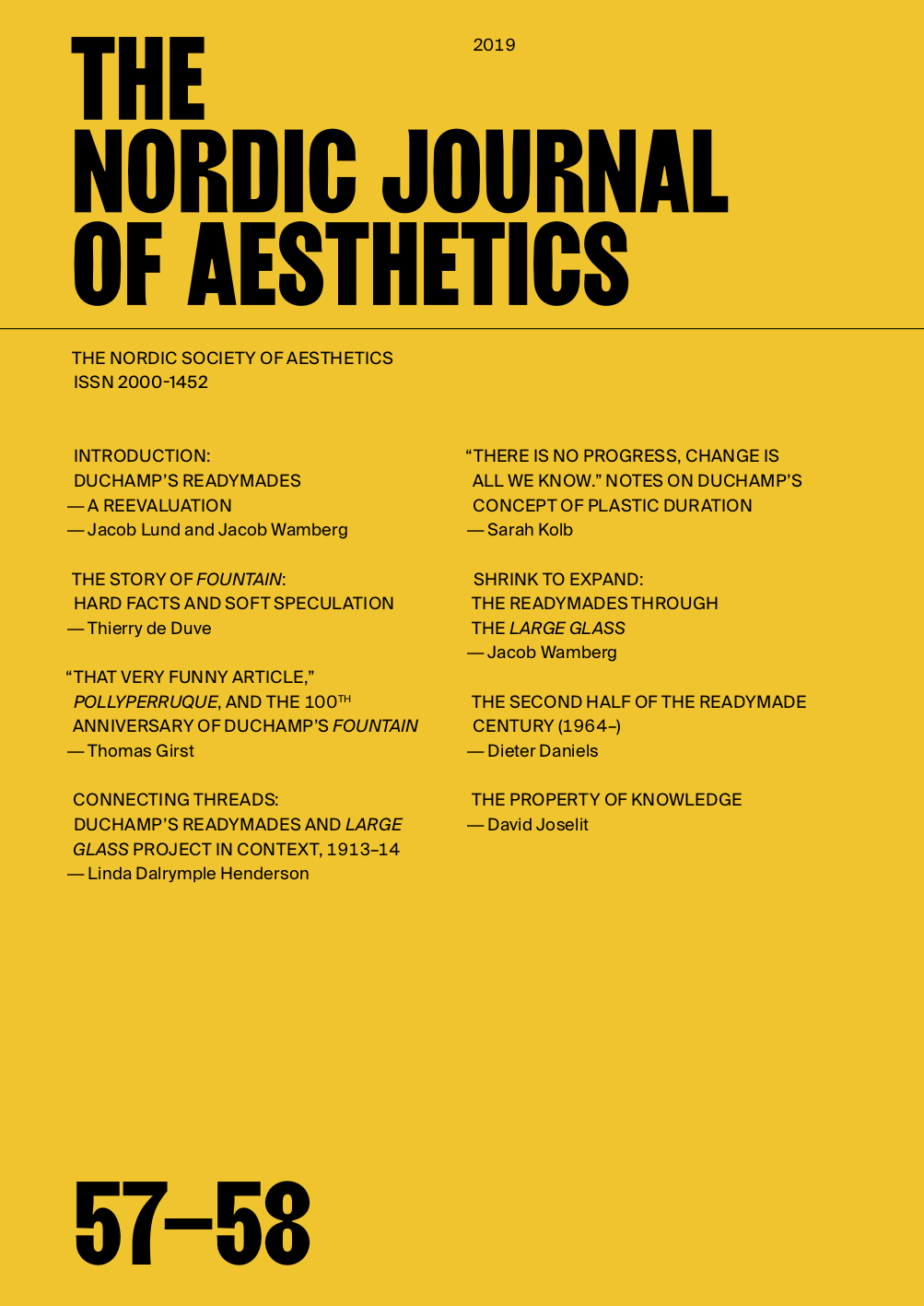SHRINK TO EXPAND: THE READYMADES THROUGH THE LARGE GLASS
DOI:
https://doi.org/10.7146/nja.v28i57-58.114852Keywords:
Marcel Duchamp, Epoché, Potentiality, Skepticism, Theory of technology, 4-dimensionality, AlchemyAbstract
Departing from Duchamp’s advice in 1961 of finding the “com- mon factor” between the non-representative and the representa- tive, translated here into modernism and avant-garde, this article seeks to understand the readymades as objects that have passed metaphorically through Duchamp’s magnum opus, the unfinished Large Glass (1915-23). More precisely, the readymades are seen as mass-produced utensils that have been stripped bare of their usual function, i.e. their actualization, in order to regain potentiali- ty. Mapping Giorgio Agamben’s interpretation of Herman Melville’s short story Bartleby, the Scrivener (1856) onto the readymades, this shrink-to-expand strategy is understood as a skeptical suspen- sion of judgment, epoché, comparable to Bartleby’s polite refusal to work. Moreover, it is seen as equivalent to the down-scaling of dimensionality observed in the Large Glass, where transparency in one go eliminates the representation of spatial circumstances and opens up the objects toward the ever-changing physical surround- ings, thereby exposing more of those 4-dimensional projections, which are normally suppressed in our reduced 3-dimensional per- ception of the world.
Downloads
Published
How to Cite
Issue
Section
License
Authors who publish with this journal agree to the following terms:
- Authors retain copyright and grant the journal right of first publication with the work simultaneously licensed under a Creative Commons Attribution License that allows others to share the work with an acknowledgement of the work's authorship and initial publication in this journal.
- Authors are able to enter into separate, additional contractual arrangements for the non-exclusive distribution of the journal's published version of the work (e.g., post it to an institutional repository or publish it in a book), with an acknowledgement of its initial publication in this journal.
- Authors are permitted and encouraged to post their work online (e.g., in institutional repositories or on their website) prior to and during the submission process, as it can lead to productive exchanges, as well as earlier and greater citation of published work (See The Effect of Open Access).




